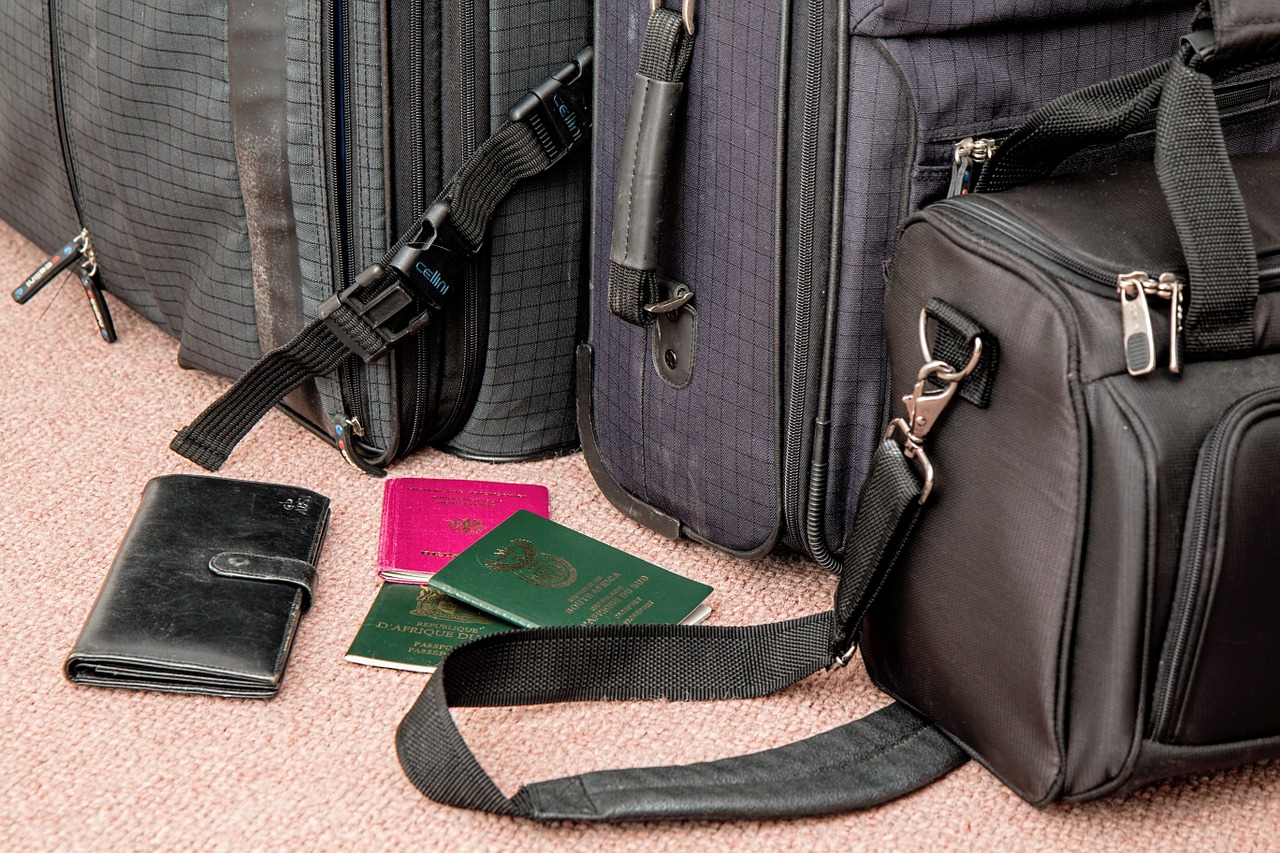Airline Baggage – Pack For Success

Between the time you check your luggage in and the time you claim it at your destination, it may have passed through a maze of conveyor belts and baggage carts; once airborne, baggage may tumble around the cargo compartment if the plane hits rough air.
In all fairness to the airlines, however, relatively few bags are damaged or lost. With some common-sense packing and other precautions, your bags will probably be among the ones that arrive safely.
Packing
You can pack to avoid problems. Some items should never be put into a bag you plan to check into the cargo compartment:
* Small valuables: cash, credit cards, jewelry, cameras.
* Critical items: medicine, keys, passport, tour vouchers, business papers.
* Irreplaceable items: manuscript, heirlooms.
* Fragile items: eyeglasses, glass containers, liquids (check the latest rules on liquids.
Things like this should be carried on your person or packed in a carry-on bag that will fit under the seat. Remember, the only way to be sure your valuables are not damaged or lost is to keep them with you. Even if your bag is not lost, it could be delayed for a day or two. Don’t put perishables in a checked bag; they may spoil if it is delayed. It is wise to put items that you will need during the first 24 hours in a carry-on bag (e.g. toiletries, a change of underwear).
Check with the airline for its limits on the size, weight, or number of carry-on pieces. (There is no single federal standard.) If you are using more than one airline, check on all of them. Inquire about your flight; different airplanes can have different limits. Don’t assume that the flight will have unlimited closet space for carry-on garment bags; some may have to be checked.
If you plan to go shopping at your destination and bring your purchases aboard as carry-on, keep the limits in mind. If you check these purchases, however, carry the receipts separately; they may be necessary for a claim if the merchandise is lost or damaged. Don’t put anything into a carry-on bag that could be considered a weapon (e.g. scissors, pen knife).
Checked baggage is also subject to limits. On most domestic and international flights, it’s two checked bags (three if you don’t have any carry-on luggage). There can be an extra charge if you bring more, or if you exceed the airline’s limits on the size of the bags. On some flights between two foreign cities, your allowance may be based on the weight of the bags rather than the number of pieces.
The same two bags that cost you nothing to check when you started your trip could result in expensive excess-baggage charges under a weight system. Ask the airlines about the limit for every segment of your international trip before you leave home, especially if you have a stopover of a day or two or if you are changing carriers.
The bags you check should be labeled- inside and out-with your name, address, and phone number. Add the name and address of a person to contact at your destination if it’s practical to do so. Almost all of the bags that are misplaced by airlines do turn up sooner or later. With proper labeling, the bag and its owner can usually be reunited within a few hours.
Don’t over-pack a bag. This puts pressure on the latches, making it easier for them to pop open. If you plan to check any electrical equipment, glassware, small appliances, pottery, typewriters, musical instruments or other fragile items, they should be packed in a container specifically designed to survive rough handling* preferably a factory-sealed carton or a padded hard- shell carrying case.
Check-in
Don’t check in at the last minute. Even if you make the flight, your bag may not. If you miss the airline’s check-in deadline, the carrier might not assume liability for your bag if it is delayed or lost. If you have a choice you should select flights that minimize the potential for baggage disruption.
The likelihood of a bag going astray increases from #1 to #4 below (i.e., #1 is safest): 1) nonstop flight 2) direct or ‘through’ flight (one or more stops, but no change of aircraft) 3) online connection (change of aircraft but not airlines) 4) interline connection (change of aircraft and airlines).
When you check in, remove straps and hooks from garment bags that you are sending as checked baggage. These can get caught in baggage processing machinery, causing damage to the bag. The airline will put baggage destination tags on your luggage and give you the stubs to use as claim checks. Make sure you get a stub for every bag. Don’t throw them away until after you get your bags back and you check the contents. Not only will you need them if a claim is necessary, but you may need to show them to security upon leaving the baggage-claim area.
Each tag has a three-letter code and flight number that show the baggage sorters on which plane and to which airport your luggage is supposed to go. Double-check the tag before your bags go down the conveyor belt. (The airline will be glad to tell you the code for your destination when you make reservations or buy your tickets.)
Your bags may only be checked to one of your intermediate stops rather than your destination city if you must clear Customs short of your final destination, or if you are taking a connection involving two airlines that don’t have an interline agreement. Be sure all of the tags from previous trips are removed from your bag, since they may confuse busy baggage handlers.
Claiming your bags
Many bags look alike. After you pull what you think is your bag off the carousel, check the name tag or the bag tag number. If your bag arrives open, unlocked or visibly damaged, check right away to see if any of the contents are missing or damaged. Report any problems to the airline before leaving the airport; insist on filling out a form.
Open your suitcase immediately when you get to where you are staying. Any damage to the contents or any pilferage should be immediately reported to the airline by telephone. Make a note of the date and time of the call, and the name and telephone number of the person you spoke with. Follow up immediately with a certified letter to the airline.



